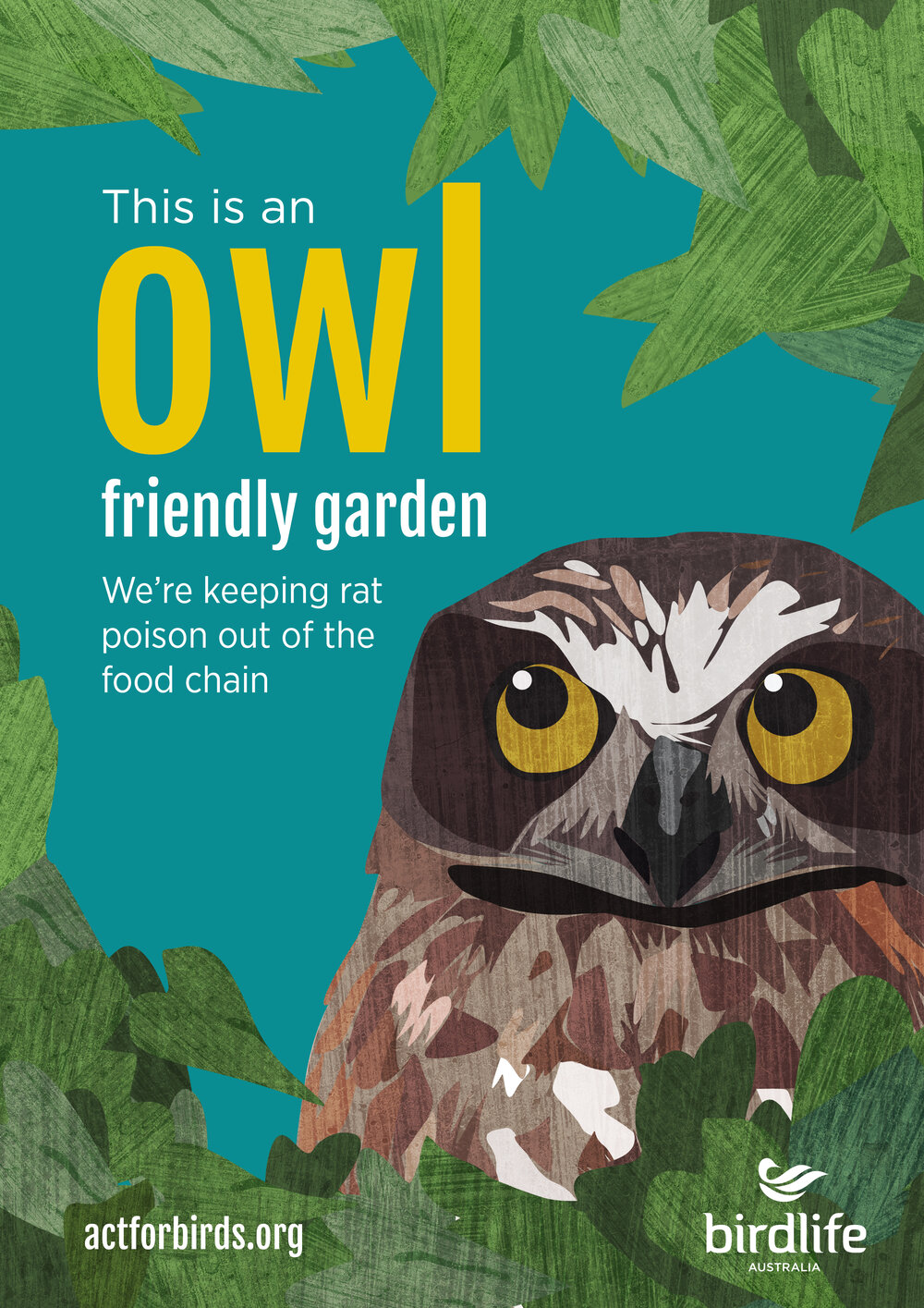September 29 - October 27, 2024: Issue 635
Rat poison kills family of 3 kookaburras in Avalon
Kookaburra fledgling at Pittwater Online office. Photo: A J Guesdon
An Avalon Beach gentleman has recently reported the death of a family of 3 kookaburras in his yard due to someone using a rat poison to get rid of rats in their yard. One of the adults ate the poisoned slowly dying rat and fed it to youngsters, resulting in the slow horrible death of all 4 animals.
BirdLife Australia, which has been campaigning for years to get these killers out of the environment, states:
Second-generation Anticoagulant Rodenticides aren’t just a threat to target pest species like feral mice and rats, and can affect a wide range of non-target native wildlife or domestic pets.
Ingestion is the main way animals get poisoned by SGARs. There are two ways animals can ingest poisons:
- Primary poisoning occurs where an animal consumes poison directly, such as a mouse eating poisoned bait.
- Secondary poisoning occurs where an animal consumes another organism that has been poisoned, such as owls eating mice that have eaten poisoned bait.
Although SGARs say they’re fast, they don’t kill immediately. This means that animals poisoned at unsecured baits have time to run around and spread the poisons around, greatly increasing the risk of secondary poisoning events.
Rodenticides don’t just affect mice and rats. Even sub-lethal doses of SGARs can result in slower reaction times and worse reflexes for a wide range of animals, meaning they are more likely to be preyed upon or to be hit by cars.
However, the most insidious problem with SGARs is that they don’t break down easily. Because SGARs break down slowly, poison builds up in animal tissue more easily, making sub-lethal effects worse or ultimately killing animals outright. SGARs also don’t break down quickly through an animal’s decomposition, so animals can remain poisonous for months or even years after they die.
Keep your home and garden safe from bird-killing SGARs
Native birds, wildlife, and even pets are dying after eating rodents poisoned by SGARs.
Thankfully, there are easy ways to make your home and garden safer!
Make your house and garden less friendly for rodents:
- clean up garden waste, including fallen fruit, and keep your yard/shed tidy
- seal potential roof/wall cavity access points that rodents might be using
- ensure excess pet food isn’t accessible, and rodent-proof chook pens and aviaries
- limit access to compost heaps, by lining the base with suitable mesh and turning it over often
Support native predators:
- plant owl-friendly native plants and trees with a good canopy cover
- replace rat-friendly plants, like palms, with local endemics - ask your council for tips on what to plant
- install appropriately designed nest boxes for owls to breed in
Reduce dependence on poison baits:
- consider non-poison pest control, like snap traps
- only put out baits when you actually need to
- if you do choose to use poisons, learn which products to buy and avoid here
Encourage others to join you:
- Download and print your free Bird-Friendly Garden poster and put it in your front window or fence to show that your garden is poison-free and safe for birds
- Ask your friends, family and neighbours to join the campaign
- Share the evidence against SGARs
- Take one of our many actions to help phase out the use of SGARs in Australia
Non-target animals are affected by primary poisoning:
When someone is focused on a pest rodent they are trying to bait, it can be easy to ignore the non-target animals that may also eat poisoned baits - note that this problem is true of all poisons, not just SGARs.
Besides feral rodents, poisoned baits can be eaten by a wide range of often common backyard animals, including:
- native birds like native pigeons, parrots, ducks, ravens, and gulls
- introduced birds like sparrows, pigeons, and free-range chickens and ducks
- native mammals like possums and native rodents
- reptiles like skinks
- domestic animals like dogs, cats, and even horses
- invertebrates, including many common garden slugs and bugs
Non-target animals are affected by secondary poisoning:
While animals that eat mice and rodents are the ones most obviously at risk of secondary poisoning, many insectivores, scavengers, and predators of larger prey are at risk too.
Of rodenticides, SGARs pose the biggest threat of secondary poisoning.
Non-target birds at include:
- predators of rats and mice, like owls, falcons, frogmouths, currawongs, ravens, magpies, and kookaburras
- larger predators like Powerful Owls and Wedge-tailed Eagles also eat possums and other birds that have been exposed to SGARs
- birds that eat poisoned invertebrates, like ibis, robins, thrushes, rails, ducks, magpies, and shorebirds like plovers
- carnivorous birds often scavenge dead rodents / prey, too
Other animals include:
- carnivorous pets like cats and dogs
- native mammal carnivores like quolls and Tasmanian Devils
- native reptiles like snakes and some lizards
- native frogs
- scavenging invertebrates like carrion beetles
